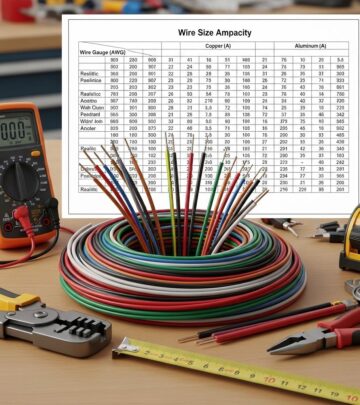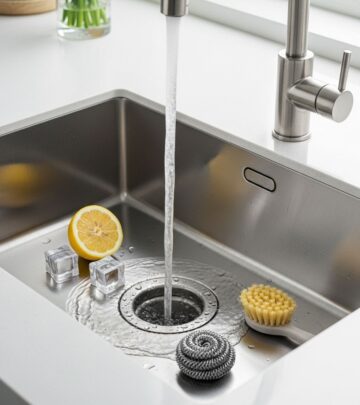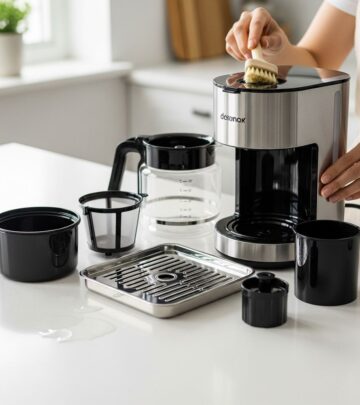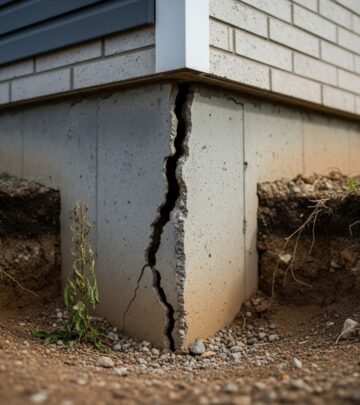Raised Garden Bed Ideas: 32 Creative Designs for Your Yard
Transform outdoor spaces with unique designs to grow vibrant plants and fresh veggies.
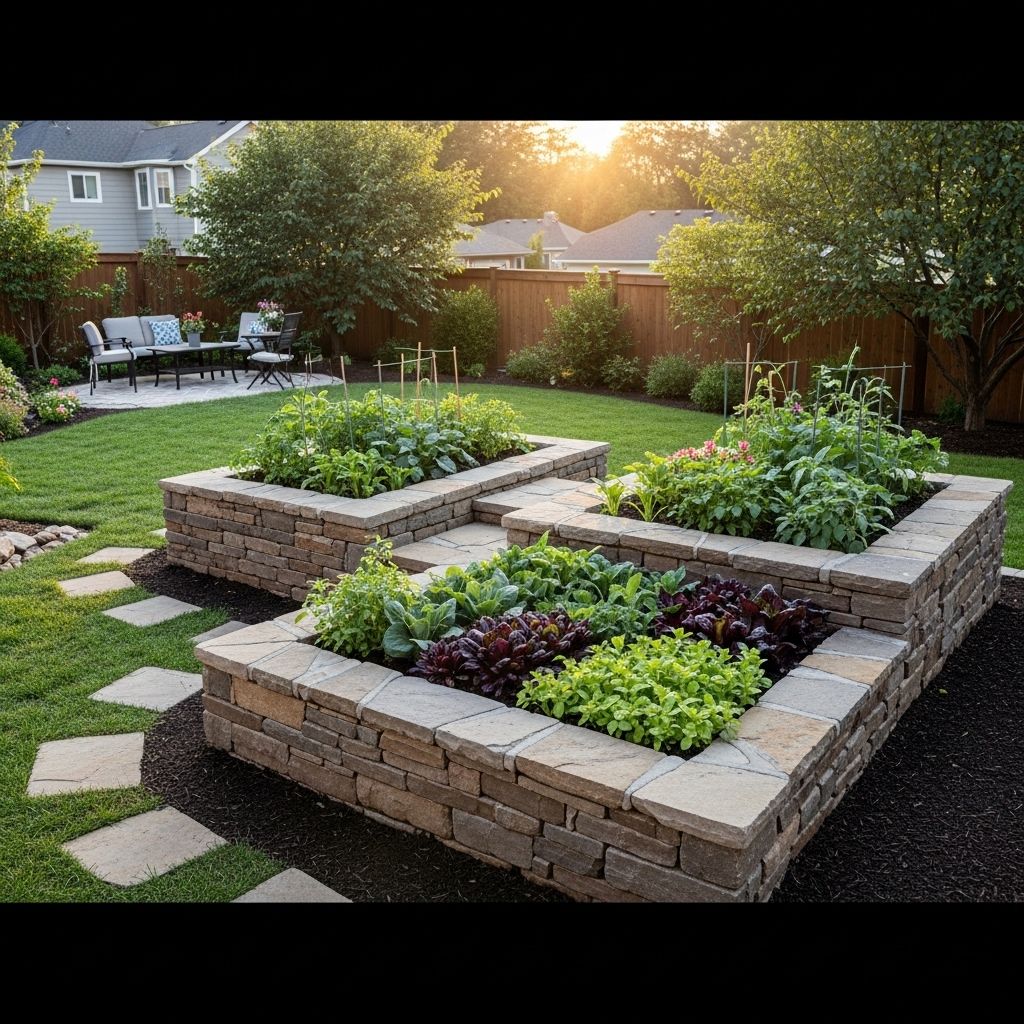
Image: HearthJunction Design Team
32 Creative Raised Garden Bed Ideas for Every Yard
Raised garden beds are a versatile and attractive solution for modern gardeners. They not only keep your garden organized and boost curb appeal but also improve soil drainage, deter weeds, and can even extend your growing season. Whether you have a large yard, a compact urban patio, or sloping terrain, these 32 creative raised bed ideas will inspire you to cultivate beauty and bounty in any space.
Why Choose Raised Garden Beds?
- Improved soil drainage and aeration for healthier plants
- Better control over soil composition
- Easier access and less bending, making gardening more accessible
- Enhanced weed and pest management
- Greater visual structure and organization in your landscape
1. Border Raised Beds
Make the most of sloped yards or uneven terrain with border raised beds. By elevating beds at low points and creating wide planting areas, you can add depth, allow for layered plantings, and frame your garden with shrubs or ornamental grasses. This approach creates the illusion of a level, beautifully tiered garden that softens hard edges and adds lush texture.
2. Double-Use Raised Garden Bed
Maximize utility by combining functional storage with attractive planting. Place a wooden flower box above a trash or recycling bin storage area to disguise practical elements with vibrant blooms or edibles. Personalize your setup with string lights, paint, or decorative trims for added charm.
3. Raised Bed Arbor
Embrace vertical gardening by integrating a trellis or arbor into your raised bed. This is perfect for vining crops like zucchini, beans, or cucumbers. Use bamboo poles or dowels to create an inexpensive framework, or install garden netting for more support. The vertical space helps keep fruit off the ground, reduces certain pests, and allows for easy harvesting.
4. Tiered Planter Beds
Tiered planters are ideal for compact spaces or for showcasing a variety of plants. Construct several levels of beds with each successive layer receding backward, forming steps. This allows for improved sunlight exposure, easy access, and a dramatic, cascading effect—great for mixing flowers, herbs, and edibles in one display.
5. Galvanized Metal Beds
For durability and a modern look, consider galvanized metal stock tanks or troughs. These sturdy raised beds are weather-resistant, easy to move, and require minimal assembly. Just drill drainage holes at the bottom, fill with quality soil, and you’re ready to plant. Their tall sides also deter some pests and make harvesting easier.
6. Reclaimed Wood and Upcycled Beds
Build eco-friendly beds by repurposing materials like old pallets, barn wood, or even doors. Not only does this reduce waste, but it also adds a rustic, one-of-a-kind touch to your garden. Always ensure wood is untreated and safe for growing edibles by lining with landscape fabric if needed.
7. Brick and Stone Raised Beds
Natural stone or brick walls give raised beds a classic, sturdy look. These materials withstand weather and blend seamlessly into both contemporary and traditional gardens. Build walls to the desired height, ensuring they are well-supported, and fill with nutrient-rich soil for lasting results.
8. Corner Planters
Make use of awkward corners with custom-built corner planters. L-shaped or triangular, they fit snugly into unused spots, turning dead space into a source of fresh herbs or colorful annuals.
9. Large, Customized Wooden Beds
Design large, rectangular beds from rot-resistant hardwoods like oak or pressure-treated pine. Customize dimensions to suit your gardening goals and yard size. Use liners if working with treated lumber to ensure soil safety. Large beds allow for intensive planting and easy paths between rows.
10. Animal Trough or Stock Tank Beds
Repurpose metal feeding troughs as instant raised beds. Their ample depth and length make them ideal for root crops and larger vegetables, and they offer a sleek, industrial vibe. Drill drainage holes before filling, and group multiples for a striking visual impact.
11. Modular or Moveable Grow Bags
Flexible and budget-friendly, fabric grow bags or milk crates can be placed almost anywhere—balconies, patios, or along walkways. They’re perfect for herbs, small greens, and shallow-rooted crops, and they can be moved to chase sunlight or protect from harsh weather.
12. Decorative Border Beds
Line pathways or fences with long, narrow raised beds filled with a mix of flowers and low-growing edibles. Border beds bring color to transition spaces, attract pollinators, and soften hardscapes.
13. Wheelchair-Accessible Beds
For inclusive gardening, build beds at a comfortable height for seated gardeners and ensure there is ample space for wheelchairs or mobility devices to maneuver around. Wide, tall beds with sturdy edges provide safety and ease of use for everyone.
14. Elevated Garden Tables
Bring gardening closer to waist height with garden tables—raised beds on legs. These are perfect for patios, decks, or where bending is difficult. Great for salad crops, herbs, and shallow root vegetables.
15. Keyhole Raised Beds
Keyhole beds are shaped like pie wedges with a central compost basket or pathway. This innovative design promotes efficient composting right at the root zone and allows easy access to all parts of the bed from the center.
16. Circular or Spiral Beds
Create a focal point with beds shaped in circles or spirals. Spiral beds are especially good for herbs, offering different microclimates at various heights. Use stone, brick, or even soil and mulch to define the spiral edges.
17. Cinder Block Beds
Cinder blocks offer a quick, modular solution for building raised beds. Stack blocks in your desired shape and height, fill the center holes with soil for extra planting space, and use the outer blocks as planters for herbs or flowers.
18. Vertical Pocket Planters
Attach pocket planters to fences or walls above your raised beds to maximize vertical space. These are ideal for trailing herbs, strawberries, or colorful annuals, adding interest to plain surfaces and increasing your planting area.
19. Benched Raised Beds
Combine garden beds with built-in seating by adding bench edges. This not only provides a place to rest and enjoy your garden but also offers practical seating for tending to plants or entertaining guests.
20. Urban Rooftop Beds
Transform urban rooftops into green oases with lightweight, shallow raised beds. Use lightweight soil and materials to avoid overburdening the structure. Rooftop gardens can provide valuable habitat and fresh produce in city settings.
21. Mosaic or Painted Beds
Add a pop of personality to your garden with beds featuring painted exteriors or mosaic tile designs. Bright colors or artistic patterns turn beds into stunning focal points and reflect your unique style.
22. Natural Log Edged Beds
For a woodland or rustic look, use logs secured along the edge of your bed. Natural log edges blend beautifully into forested or informal gardens and offer a habitat for beneficial insects.
23. U-Shaped or Horseshoe Beds
U-shaped beds maximize growing space and accessibility, creating a central area for easy tending and harvesting. This design is ideal for square or rectangular gardens, allowing you to reach all plants without stepping into the soil.
24. Window Box Raised Beds
Attach long, raised window boxes to fences or railings for extra growing space in small yards. Perfect for herbs, lettuces, or cascading flowers, they create lush green vistas at eye level and make harvesting simple.
25. Sunken Center Beds
Design beds with a lowered central section for improved water retention and protection in hot, dry climates. The sunken area helps concentrate moisture around the roots and is ideal for water-wise gardening.
26. Greenhouse-Covered Raised Beds
Extend your season with removable greenhouse covers or hoop tunnels over your beds. These protect tender plants from frost and pests and allow for year-round planting of greens or cool-season crops.
27. Child-Friendly Beds
Encourage little gardeners by building beds at a lower height and filling them with easy-to-grow, sensory-friendly plants. Add colorful stakes, decorative stones, or whimsical signs for fun and educational gardening activities.
28. Water Feature or Pond-Inspired Beds
Blend water and plants by bordering a pond with raised beds or building water-retaining beds for aquatic plants. This creates a unique wildlife-friendly focal point and enhances biodiversity in your garden.
29. Shade-Tolerant Raised Beds
If your yard is shady, construct beds in areas that capture filtered light. Fill with shade-tolerant edibles like leafy greens, herbs, or woodland perennials for year-round beauty and utility.
30. Mixing Edible and Ornamental Plants
Combine flowers, vegetables, and herbs in the same raised bed for a vibrant, edible landscape. Plant taller crops at the back for structure, fill the middle with bushy edibles, and let trailing flowers or herbs spill over the edges.
31. Gravel or Mulch Pathways Between Beds
Define your garden layout by adding gravel, mulch, or stone walkways between raised beds. Not only does this improve access and reduce mud, but it also creates clear visual lines and a tidy overall appearance.
32. Decorative Lighting and Accessories
Enhance your raised bed garden with string lights, lanterns, or solar fixtures to create a magical atmosphere after sunset. Add trellises, garden art, or bird feeders to complement your plantings and create a welcoming outdoor retreat.
Table: Comparison of Raised Bed Materials
| Material | Durability | Cost | Best For |
|---|---|---|---|
| Wood (Cedar, Oak, Pine) | High (Cedar/Oak), Medium (Treated Pine) | Medium | Custom Builds, Natural Look |
| Galvanized Metal | Very High | High | Modern, Pre-Made Options |
| Stone/Brick | Lifetime | High | Permanent Installations |
| Cinder Block | High | Low | Quick Builds, Modular |
| Grow Bags/Fabric Pots | Low-Medium | Low | Small Spaces, Portability |
Frequently Asked Questions (FAQs)
How deep should a raised garden bed be?
For most vegetables and flowers, a bed depth of 12 to 24 inches is ideal, but even 6 inches can support shallow-rooted crops. Deeper beds are better for root vegetables and large plants.
What materials are safe for vegetable gardens?
Use untreated or rot-resistant wood (like cedar), stone, or food-safe metal. If using pressure-treated lumber, line the interior to reduce chemical leaching. Avoid old railroad ties due to potential toxins.
How do I prevent weeds in raised beds?
Line the bottom with landscape fabric or cardboard before adding soil. Regular mulching and diligent hand weeding also help keep weeds at bay.
Can I place a raised bed on a patio or concrete?
Yes. Raised beds can be placed on hard surfaces, as long as adequate drainage is provided. Consider adding a layer of gravel beneath the soil or raising the bed on feet.
What should I fill my raised bed with?
A quality mix includes topsoil, compost, and other organic matter. For best results, use a blend of 60% topsoil, 30% compost, and 10% perlite or sand for drainage.
Tips for Raised Bed Success
- Rotate crops annually to prevent soil-borne diseases.
- Amend soil with compost each season for fertility.
- Install drip irrigation or soaker hoses for efficient watering.
- Mulch the soil surface to retain moisture and regulate temperature.
Conclusion
Raised garden beds offer endless potential for customization, creativity, and productivity in any outdoor space. From sleek metal troughs to rustic log borders, there’s a raised bed style to suit every taste, budget, and gardening need. Let these 32 ideas inspire you to craft a thriving, beautiful haven that enriches your home and lifestyle!
References
Read full bio of medha deb





